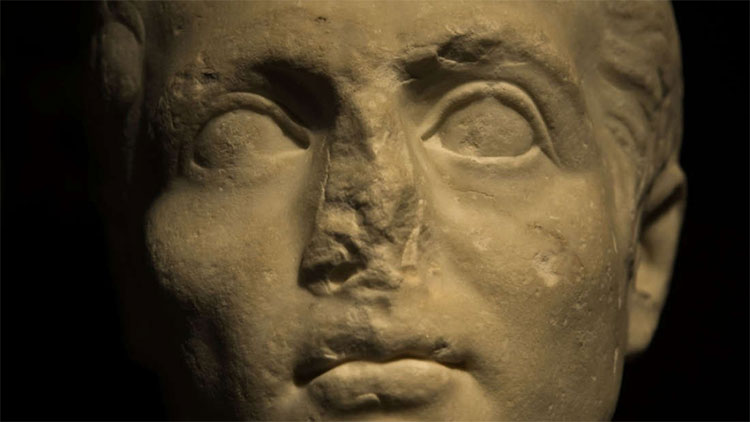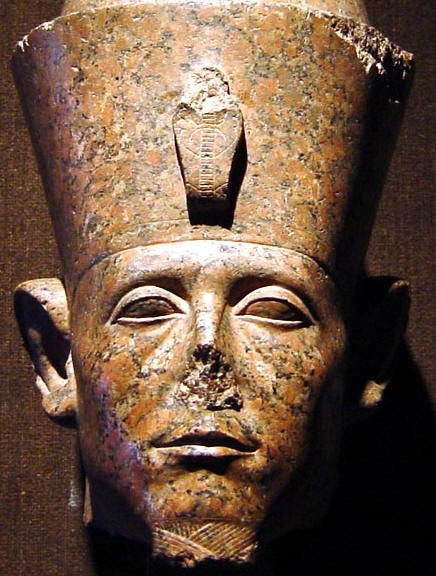The truth behind many ancient Egyptian statues lost their noses
As it turned out, the noses of these statues did not naturally disappear, but rather intentional vandalism.
The fact that ancient statues were damaged over time is inevitable. Strolling through a number of museums around the world, you can easily see many statues that are no longer intact: lost hands, lost legs, even lost a human body.
Ancient Egyptians sculpted countless statues of pharaohs, religious figures, and the rich. However, there is a very strange phenomenon, the majority of ancient statues have lost their nose , while the other parts are almost unchanged. Why is it so strange?

Most ancient statues have lost their noses.
Edward Bleiberg, the curator of the Egyptian gallery at the Brooklyn Museum of Art, said he didn't pay much attention to this, until many tourists questioned why there were so many statues that didn't. nose? Bleiberg decided to find out, and the answer given surprised many people.
Because, those noses were intentionally beaten , not by the effects of time.
Initially Bleiberg conducted research assuming that the nose was only broken by accident. However, that assumption was quickly rejected. "Consistency in the fractures indicates that it is an intentional act," Bleiberg said. The evidence also indicates that the smoker only aims for the nose.
Ancient Egyptians believed the statue had "vitality , " according to Adela Oppenheim, manager at the Egyptian Art Chamber of the Metropolitan Museum of Art, New York City. If the enemy or vandals want to disable a statue, it is best to destroy the nose, she said.
But why?
Bleiberg believed that everything related to the beliefs of the ancient Egyptians , said that the objects imitating the deceased contained their souls. Statues, bas-reliefs . so it is like a gate to help the living to communicate with the spirits, even to the gods.

The ancient pharaoh statue has lost its nose.
Most of these objects are kept in tombs or temples. The people will work hard to worship, offer offerings, and in return, be prayers for protection from idols. According to the conception of the ancient Egyptians, it was a way for the gods and souls of the deceased to gain strength and power. If you want to strip away that power, there's only one way to destroy a statue.
"Every broken part will lose its function to the soul," explained Bleiberg.
It can be understood more simply as: when the statue loses ears, the soul will not be able to hear pleas. Lost hands, the statue could not receive gifts from the people. When losing the nose, the soul will not be able to breathe - or in other words, a form of "killing" the statue and the soul in it.
According to Bleiberg, the ones who want to kill the souls are usually grave robbers. They smashed the nose of the statue to prevent revenge on the dead.
It is also important to know that in ancient Egyptian history many times the objects that simulated humans were destroyed. For instance, mummies are often intentionally destroyed so that the dead can rest.
Ancient documents indicate that the ancient Egyptians burned wax statues to mimic the image of soldiers fighting with each other, to threaten that the pharaoh would punish those who hurt their own people. Later, Westerners came to Egypt and also destroyed many statues, in order to prevent the "pagan demons" from reviving.

The "cutting nose" of the statue does not only exist in Egypt.
Particularly about "cutting nose" the statue is not only exist in Egypt. In the history of Greece, Rome and the Persian empire had similar actions. According to Mark Bradley, an expert historian at the University of Nottingham (UK), the "dam nose" in the culture of the country does not mean "kill object" as the Egyptians, which is to signify the punishment "cut nose "they actually apply to sinners.
This punishment is quite common in many cultures - including ancient South America, medieval Europe, India and Arab. For example, Emperor Justinian II of the Byzantine Empire was cut off his nose when the throne was overthrown, so that he could not return to claim the throne (despite the fact that Justinian II continued to coup after there).
"This is one of the famous symbols used to ridicule, insult, honor and show pain" - Bradley said. And because it's famous, we're seeing so much today.
In addition to the theory, there is a second theory about the broken nose of Egyptian statues: the ancient Egyptians believed that the statue had "vitality" , according to Adela Oppenheim, manager at the Ai Art Department. Depends on the Metropolitan Museum of Art, New York City. If the enemy or vandals want to disable a statue, it is best to destroy the nose, she said.
Ancient Egyptians didn't really think that statues would stand up and move because they were made of stone, metal or wood. They also do not think that images can breathe in the true sense. "The Egyptians knew that statues did not breathe air, they could see it. However, the statues had vigor and vigor passing through the nose and airways of humans , " Oppenheim explained.
The practice of performing rituals for statues was common in ancient Egypt, including the "open mouth" ritual . Accordingly, the ancients will apply oil and take some other steps so that the statue can " eat and breathe". "This ceremony gives the statue a kind of vitality and power , " Oppenheim said.

The engraving also destroyed the nose. (Photo: Brooklyn Museum).
The concept of the life force image is so common that it compels adversaries to suppress this power when necessary. For example, people who steal, demolish, renovate or damage temples, tombs and other sacred places think that statues can harm them in some way.
In addition to statues, this concept also applies to human and animal carvings. Sometimes vandals don't just stop at the nose, Oppenheim said. They also destroy the face, hands or feet to nullify the sacred power.
- Discovered more than 3,000 years of pharaoh statues
- Mysterious Egyptian statues themselves move
- Play the giant phenomenon of Pharaoh power
- Detecting ancient phenomenon on the seabed of Cu Lao Cham
- 'Excavation' mysterious electric energy from ... Egyptian crypt
- 6 things we do not know about the people of ancient Egypt
- The mystery in wooden statues is twice as old as the Pyramid
- Decipher the unusual statues of the year 1,400 years
- Egypt announced two giant pharaohs
- Add new findings from ancient Egyptian mummies
- Why are ancient Greek statues naked?
- Revealing the incredible truth few people know about ancient Egypt
 'Fine laughs' - Scary and painful torture in ancient times
'Fine laughs' - Scary and painful torture in ancient times The sequence of numbers 142857 of the Egyptian pyramids is known as the strangest number in the world - Why?
The sequence of numbers 142857 of the Egyptian pyramids is known as the strangest number in the world - Why? History of the iron
History of the iron What is alum?
What is alum?